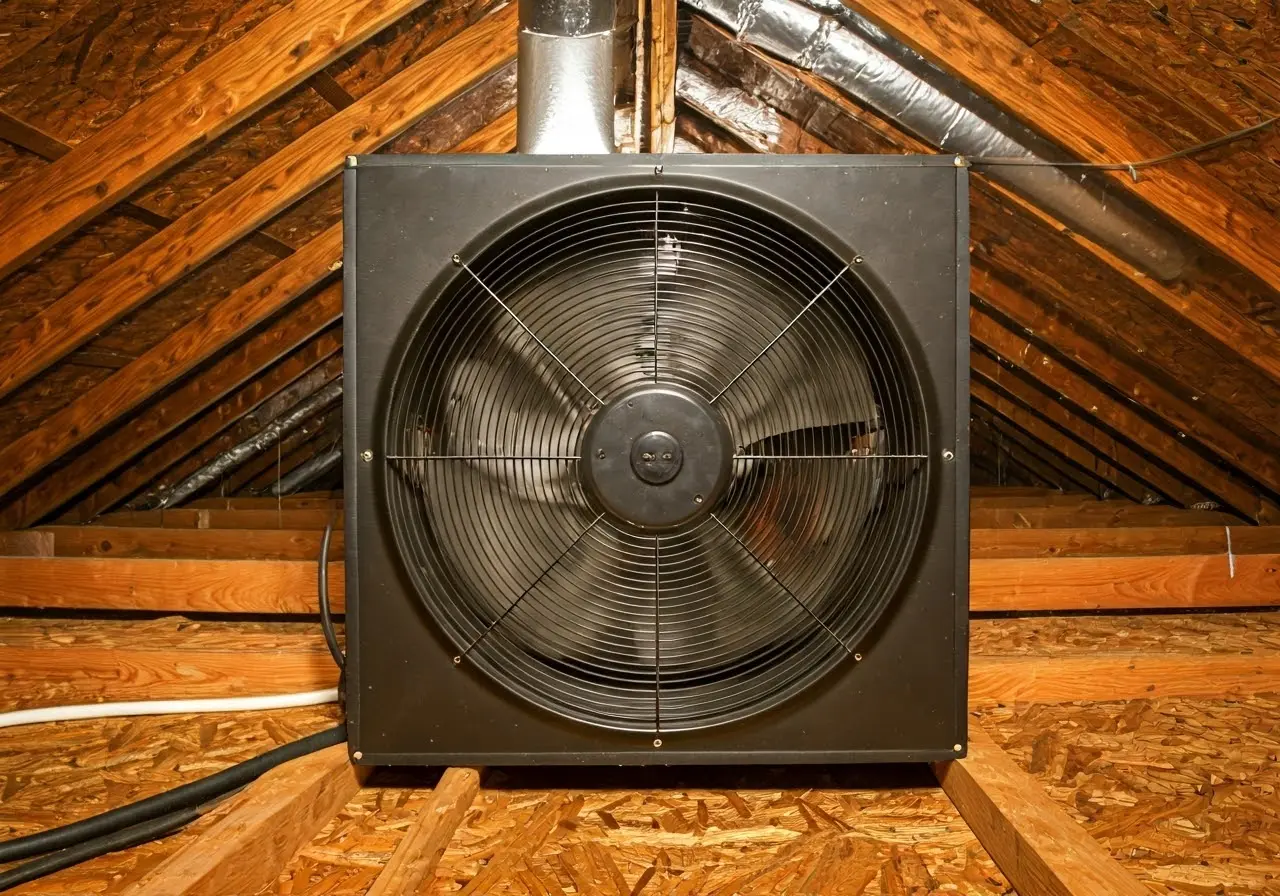Installing an attic fan can be a great way to improve the ventilation in your home, leading to lower energy bills and increased comfort. However, before you dive into this project, there are several important factors to consider to ensure you make the best decision for your home and budget.
Understand the Purpose of an Attic Fan
Before installing an attic fan, it’s important to understand its primary purpose. An attic fan helps to ventilate the attic space, removing hot air and reducing the strain on your air conditioning system, which can help lower energy costs.
Installing an attic fan is particularly beneficial in areas with harsh summers, where attic temperatures can skyrocket. By actively pulling the hot air out, these fans prevent heat from accumulating and transferring to other parts of your home, potentially reducing cooling costs significantly during those sweltering months.
Furthermore, having a well-ventilated attic helps in prolonging the lifespan of your roof. Excessive heat and moisture can lead to deterioration of the roofing materials. An attic fan mitigates these risks, ensuring that both your roofing structure and insulation remain in good condition.
Evaluate Your Attic’s Ventilation Needs
Consider your home’s current ventilation setting. A well-ventilated attic already might not need an additional fan. Assess whether your attic experiences excessive heat buildup during the hot months.
It’s important to carry out a comprehensive evaluation of your attic’s current ventilation status. If you notice uneven temperatures in various rooms of your house, or increased energy bills, these could be signs that your attic ventilation is inadequate.
Furthermore, consult with a professional to evaluate the role a new attic fan could play. They can advise on whether proper attic ventilation can be achieved by installing a fan, which can be crucial for homes without sufficient passive ventilation points like soffits or ridge vents.
Consider the Size and Type of Fan
The size of the fan you’ll need depends on the size of your attic and the airflow requirements. You should also consider whether a roof-mounted or gable-mounted attic fan best suits your home’s layout.
Choosing the right fan size is crucial to the effectiveness of your attic ventilation system. Ensure you select a fan that can move a sufficient amount of air to meet your attic’s volume. Often, the capacity of a fan is expressed in cubic feet per minute (CFM), and the right size depends on your attic’s square footage.
Beyond size, another consideration is the fan type. Roof-mounted fans are typically easier to install on newer homes, while gable-mounted fans can be ideal for homes that have existing gable vents that can serve as the fan’s intake and exhaust points.
Additionally, explore whether a solar-powered fan might be a cost-effective option for your home. These fans harness the sun’s energy, providing an environmentally friendly alternative that operates without impacting electricity bills.
Check Local Building Codes and Regulations
Before any installation begins, it’s crucial to check if you need permits or if there are specific regulations in your area regarding attic fan installations.
Local building codes can vary greatly, so consulting with your municipal government or a local contractor will help you ensure compliance. Some areas require permits for electrical work, and inspecting your fan installation might be mandatory, especially if rewiring is necessary.
It’s always wise to err on the side of caution and verify whether special regulations apply to modifications on heritage homes or homes in certain zones. Staying informed prevents any unexpected legal issues during or after your installation project.
Assess Installation Costs and Professional Help
Determine your budget for the project, keeping in mind the cost of the fan, potential installation fees, and whether you’ll need to hire a professional to handle the installation safely and effectively.
While DIY enthusiasts might want to tackle the installation themselves, it’s important to assess whether professional assistance is necessary, especially when dealing with complex electrical hookups. Improper installation could lead to inefficient operation or safety hazards.
Consider the cost implications of different fan models and installation types. Some contractors offer complete packages that include both the purchase and installation of the fan, which might save you time and hassle.
Ultimately, investing in professional help could bring peace of mind, ensuring that your attic fan is installed correctly and functions optimally, maximizing the benefits of improved ventilation and lowering your home’s energy consumption.
Final Thoughts on Attic Fan Installation
Installing an attic fan can be a valuable addition to your home, offering benefits like improved ventilation and energy efficiency. By taking the time to consider these factors and planning accordingly, you can ensure a successful installation that serves your home well for years to come.










